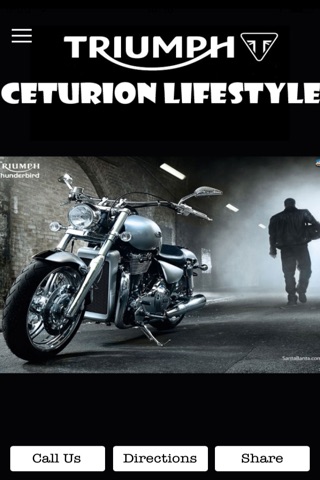
TRIUMPH HERITAGE
Through the Fifties and Sixties, names such as Steve McQueen and Marlon Brando cemented the Triumph legend, while numerous land speed records and race track successes gave bikes like the Thunderbird, Bonneville, Tiger and Trident iconic status.
1902
The first Triumph motorcycle is produced, powered by a 2.2hp Minerva engine and subsequently known as No. 1.
1907
A new 450cc motor making 3.5 hp is produced. As annual production reaches 1,000 units, the factory moves main production to a larger site on Priory Street in Coventry.
1915
Triumph is chosen to supply the Type H ‘Trusty’ motorcycle for Allied military service. Of 57,000 manufactured, 30,000 of the 499cc air cooled single cylinder bikes see active service.
1927
The Coventry factory, now standing at 500,000 sq ft and employing 3000 people, produces 30,000 units per annum.
1936
Triumph’s car and motorcycle businesses are split. Edward Turner is appointed as chief designer.
1937
Turner unveils the 498cc Speed Twin (T100) that has a top speed of over 90 mph. It is the definitive British motorcycle and establishes a pattern for Triumph bikes that will last more than 40 years.
1940
Over 50,000 motorcycles are sold to the military as motorcycle production is geared towards the war effort. The Priory Street factory is demolished on November 14, 1940 in the blitz of Coventry. Temporary premises in Warwick are used until a new plant opens in Meriden in 1942.
1946
With the return of peace, the company focuses on three models, the Tiger 100 (piloted to a maiden win at the 1946 Manx Grand Prix by Eric Lyons), the Speed Twin and the smaller touring 349cc 3T. All models feature a telescopic front fork.
1954
Marlon Brando rides a 650cc Thunderbird 6T in ‘The Wild One’.
1955
Johnny Allen hits 193 mph on the Bonneville Salt Flats, riding a streamliner powered by a tuned 650cc Thunderbird motor. It’s the start of a remarkable era of performance dominance, when Triumph held the absolute motorcycle land speed record for 15 consecutive years, except for one brief 33-day period.
1959
The iconic T120 Bonneville 650 is introduced. Named in honour of the location of the setting of countless World speed records, the Bonneville is destined to become one of the greatest motorcycles, and the highest selling British twin of all time
1963
A TR6 650 Trophy is ridden, jumped and crashed by Bud Ekins, and more famously Steve McQueen, in ‘The Great Escape’.
1966
Buddy Elmore wins the Daytona 200 on a factory-prepped 500cc Tiger. The Gyronaut X-1, a streamliner powered by two Triumph 650cc motors, records 245.6 mph on the Bonneville Salt Flats.
1967
Gary Nixon proves that last year’s Daytona 200 win was no fluke by repeating the feat aboard a Tiger 100. Further racing success is enjoyed in the Production TT by John Hartle on a production TT. 28,700 Triumphs are sold in the USA.
1968
The 750cc Triple finally makes an appearance, powering both the Trident and the BSA Rocket 3. Evel Knieval attempts to jump the fountain at Caesar’s Palace casino in Las Vegas on a Bonneville.
1969
Malcolm Uphill wins the Production TT on a Bonneville. In the process he puts in the first-ever lap over 100 mph on a production motorcycle. Motorcycle production at Meriden peaks at approximately 46,800 units.
1970
Malcolm Uphill again wins the production TT on a Triple destined for further fame and subsequently referred to as Slippery Sam.
1975
Bonneville production continues after the workers form a co-op to keep the Meriden factory going. Slippery Sam wins the ten lap Production TT for the fifth year running.
1983
The Meriden factory closes its doors. John Bloor acquires the Triumph name and Meriden site and licenses a small number of Bonnevilles to continue to be produced by Les Harris in Devon.
1987



